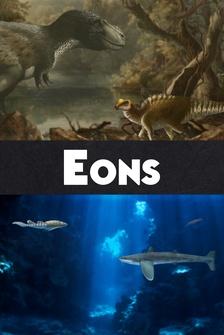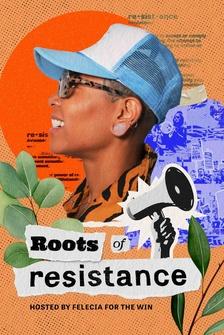- [Lucy Kerhoulas] There's something really magical about a redwood forest.
Hanging out in a tree that you know is 2,000 years old and kind of stoically standing in one place, you kind of have to experience to be able to explain.
- [Steven Mietz] There's three things that kill trees.
There's bugs, there's fire, and there's disease.
And this tree is adapted to fight all three of those.
- [Jason Teraoka] It's the tallest tree in the world.
There are species up there that only exist in the canopy, and you don't find them anywhere else in the world.
- [Frankie Myers] The size alone makes you feel humble, and I think anytime humans can make a connection that makes them feel humble, it fascinates us.
- [Narrator] The redwoods predate our existence on this planet by 135 million years.
Today, what's left to them can be found on a narrow strip along the Northern Pacific coast.
These mighty giants survived the age of the dinosaurs.
Can they survive us?
(bright music) (bright music continues) - [Frankie] We are on the banks of the Hehlkeek 'We-Roy.
The Klamath River.
I am a part of the Yurok tribe.
(calming string music) Our home is surrounded by keehl, the old growth redwoods.
We've been here as long as they've been here.
We respect them, because they're living beings.
And when they're in canoes, they're part of our family.
The story that has been handed down from Yurok people, it talks about the redwoods as guardians, and they watched out for us as a people.
- [Steven] You come to this forest, you feel the calming presence coming from these ancient, giant trees, who are just saying, "It's okay.
We survived for hundreds and thousands of years, and so can you."
(dramatic music) This is the place the redwoods grow the best and the biggest for two reasons.
One, this coastal zone of California along the cold Pacific Ocean gets a lot of rains.
It needs a lot of water.
You can't grow a big tree without a lot of water.
And in the summer, that cold water meets the warm air and creates a lot of fog.
- [Lucy] There's physiological complications with pulling water 300 feet up against gravity.
The trees snag the fog moisture out of the air, and then the fog water can drip down the tree, and they can absorb water through their leaves, through their bark... And then they can also absorb water crazily.
They make roots in their crowns, like hundreds of feet above the forest floor, that are growing into these crazy, wet epiphyte mats, and presumably uptaking water.
- [Frankie] They're not just a species that takes water like most of our tree species do, but they capture cold water that helps benefit all of our salmonid species, and all of our species on the coast and inland as well.
(calming music) - [Steven] The redwood forest is like a giant super organism because they interweave their roots and hold each other up like true friends.
If one part of their friendship circle is having a little trouble, they actually can send them nutrients and water from another more healthier tree.
Being so tall, they're kind of vulnerable like a skyscraper to being pushed over in a big windstorm, and the only thing that really saves them from falling over is having this interconnected root system.
When the wind knocks down a tree, it actually helps the forest, right?
It opens up the forest for light to come to the forest floor and help all the other critters and all the other vegetation that needs to grow.
So, a fallen redwood tree still contributes to the forest for hundreds of years.
- [Frankie] Redwood tree had watched humans evolve, and redwood is the one who taught us the lessons of how we're supposed to treat one another.
Every time I get in one of our canoes, ohl-we-yoch, You feel that connection.
It's a good reminder that our lives are just links in a chain.
And we're all connected to one another.
- [Steven] I think the biggest threat to the redwoods today is probably just the fact that there's so few of them left.
And of that old growth that's left, 45% is here within the boundaries of Redwood National and State Parks.
And it really is a shame.
We have pictures of logging trucks and trains with trunks that we can tell are bigger than the General Sherman tree, which is the current existing biggest tree in the world.
- [Frankie] We lost some of those guardian trees.
Some of those guardian trees are being regrown right now.
- [Jason] One of the issues with our second growth forests is that they are all one cohort.
All the trees are about the same age.
You don't have this multi-layered canopy that you would see in old growth.
What we're doing is we're coming back in, and we're bringing chainsaws back into the forest to thin out these really dense second growth forests that we have here.
We're trying to redistribute growth to fewer trees to make those fewer trees more vigorous.
So we're standing in an area that has been thinned.
They're assessing how well the stand has responded to some of these restoration treatments, to see how much diameter growth has occurred.
- [Sam Pincus] All right, DBH of Sussy #26.
18.9 It grew.
This work is really inspiring because you get to see how much the trees grow in such a short amount of time when they're given the right amount of space and light, and we don't really get to see trees the way they used to grow, so coming back and remeasuring trees really makes us feel like our work is making a difference.
- [Steven] In the future, we are concerned that we could have catastrophic wild fire.
So the restoration work we're doing thinning the second grow forest, is helping reduce the fuel load on the landscape.
Hopefully we're giving these trees a chance to protect themselves.
(dramatic music) Can the redwood survive?
I think they can.
They're survivors.
They've survived for hundreds of millions of years, and I think they can survive us as well.
- [Lucy] We owe it to future generations that they can also experience these forests.
We need to protect these forests for science reasons and climate reasons, but also just, they're like a treasure on our planet, and they're really special.
- [Frankie] They've always watched over us.
They've always looked to see how we're doing.
We're supposed to reciprocate that back to them in the same way that they have cared for us since the beginning of time.
(dramatic string music) (dramatic string music continues) (dramatic string music continues)















